Most brides I meet want their wedding to be unique. They want their guests to remember it for years to come. I am always impressed by the ways couples make their day their own. When you think about it, though, weddings are rooted in so much tradition. Both from religious influence and from family traditions, many of the events of the day have a long standing history.
From “something old, something new, something borrowed, something blue” to the bouquet toss to cutting the cake, weddings are full of traditions. Deciding what traditions you want to include in your own celebration helps to make your big day unique to who you are as a couple. Get to know the history and meaning behind some of the most common American wedding traditions.
Prep / Pre-wedding
Mom helping the bride get dressed
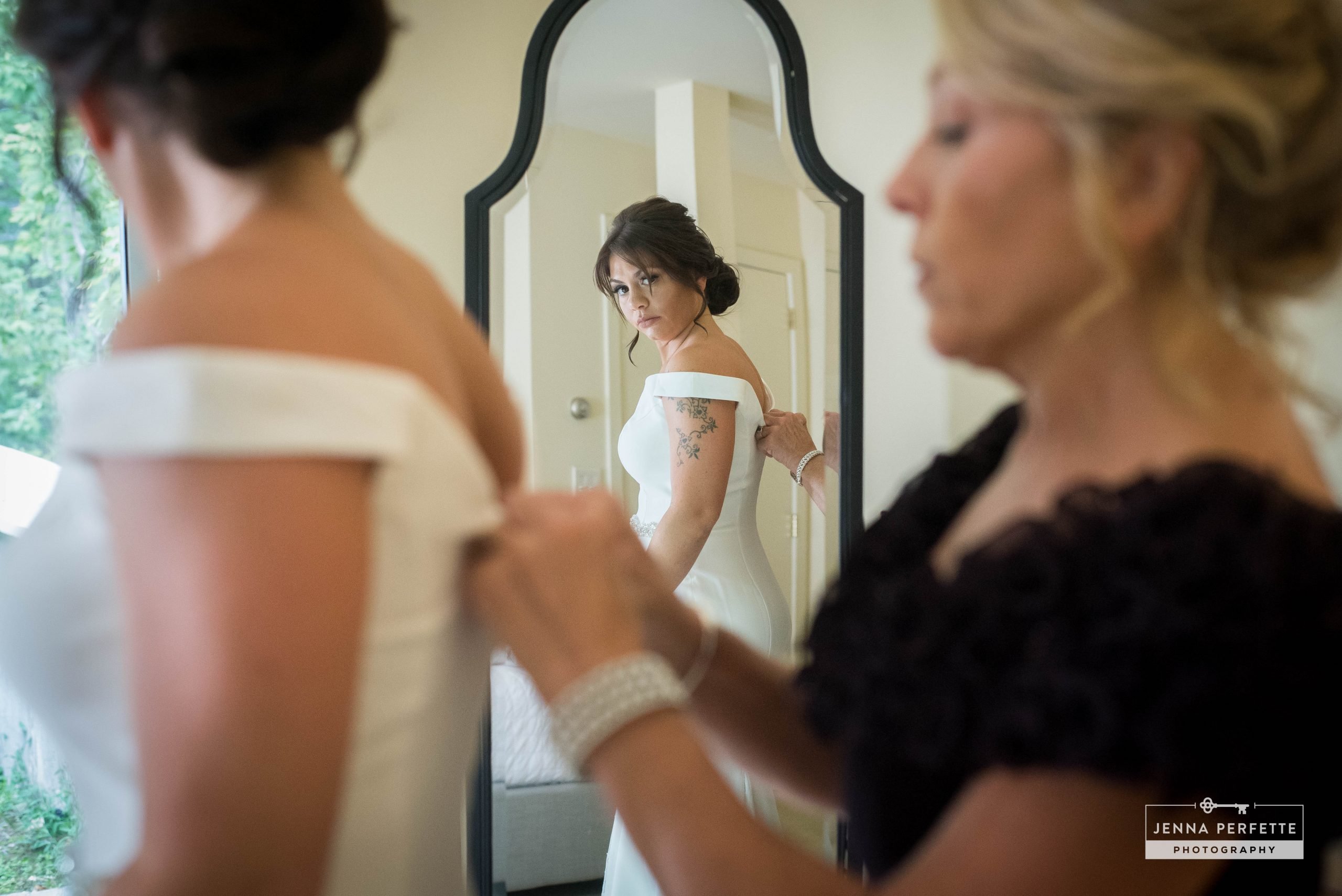
When I think of the moment a bride puts on her dress, I always imagine her mom helping button her dress up.
Mom is usually fighting back tears of joy at the thought of the last time she helped her little girl get dressed, decades before. Oftentimes, the bride is incorporating a family piece into her wedding day look; perhaps pearls from grandma or mom’s veil, so it’s a perfect time for mom’s help putting those finishing touches on.
Something old, something new, something borrowed, something blue

Probably one of the most common non-religious traditions, this ritual comes from the Old English rhyme, “Something Olde, Something New, Something Borrowed, Something Blue, A Sixpence in your Shoe.”
Each of these items are meant to bring good luck to the bride. She is meant to include each item somewhere on her during the wedding day. They are meant to ward off the Evil Eye, “a curse passed through a malicious glare that could make a bride infertile.”
Wearing white

In Roman times, the color white represented purity and was associated with Vesta, the virgin goddess of hearth, home, and family. After a while, white fell out of fashion for brides, and only resurfaced in the mid 1800s. Before then, most brides wore their best dress or a new gown because white was not a practical choice. We sure get that one, it can be a challenge keeping that train clean all day long.
Queen Victoria’s wedding to Prince Albert in 1840 sparked a new interest in white gowns, after she chose against the royal norm of coronation robes. Instead of being a sign of virginity, wearing white was instead a sign of wealth and status. The tradition is still going strong – according to a survey in Brides Magazine in 2018, 83% of brides wore white dresses on their big day.
Engagement ring
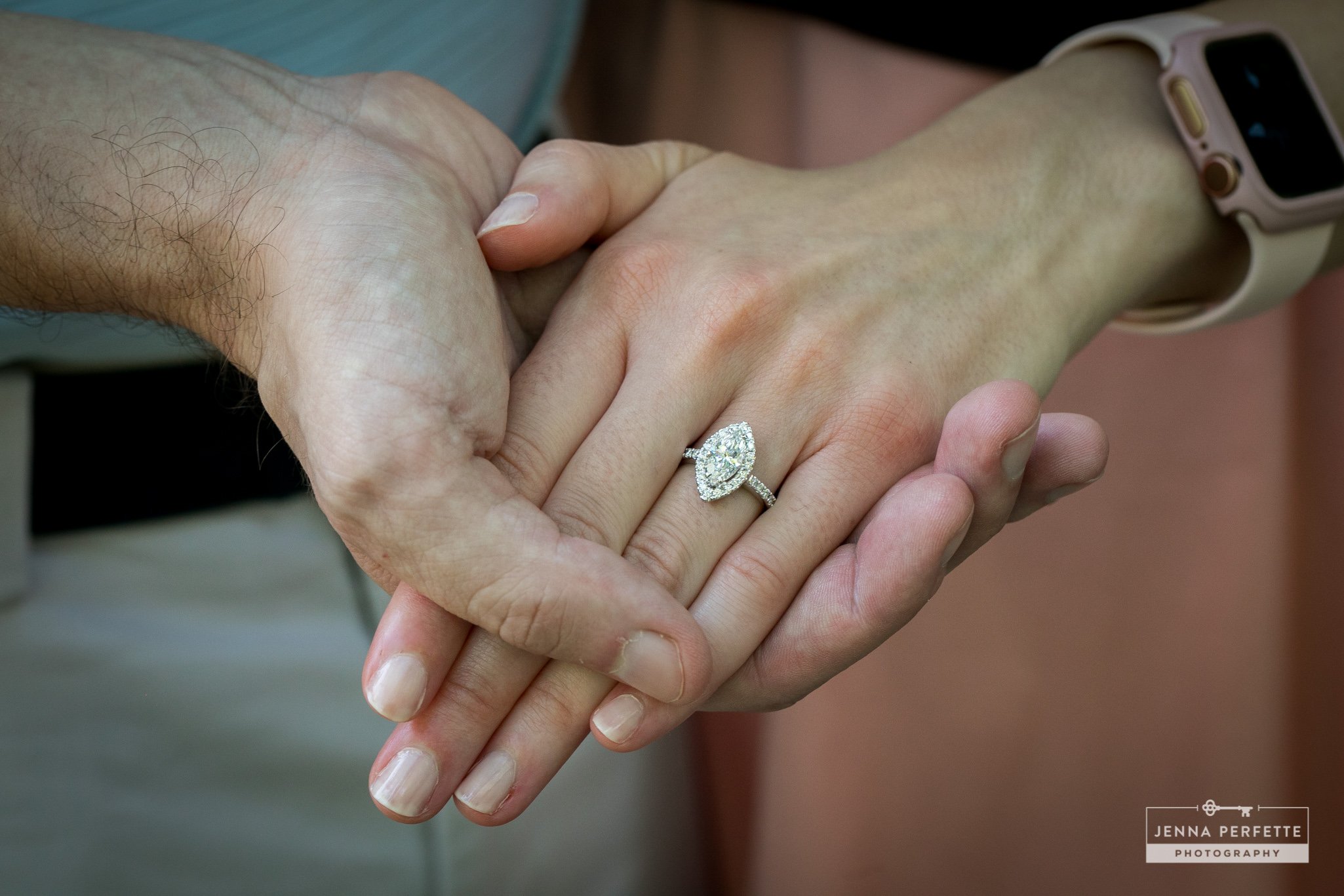
We can thank Pope Nicholas I for the official meaning of an engagement ring in the year 850. He declared that the ring represents a man’s intent to marry. Diamonds, however, didn’t make an appearance on an engagement ring until 1477. It wasn’t until much later in the 1940s that it became the norm. Thanks to Hollywood celebrities and the famous De Beers slogan, “a diamond is forever,” the popularity of diamond engagement rings skyrocketed. In recent years, we’ve been seeing a shift towards non-diamond engagement rings, including jewels like sapphire and ruby.
Ceremony
Handfasting
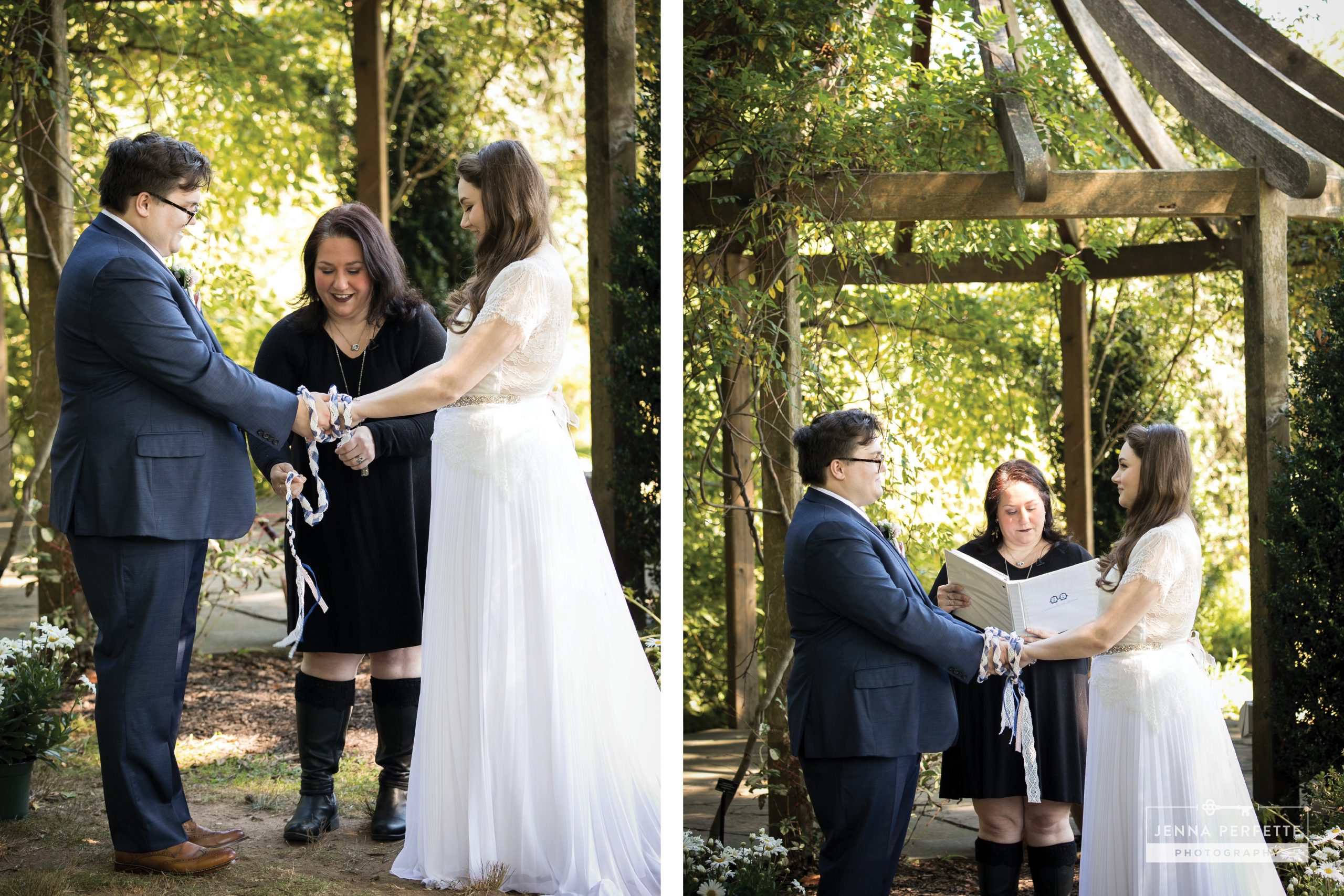
Handfasting is an ancient Celtic tradition where the hands of a bride and groom are tied together to symbolize the binding of two lives. During the ceremony, the officiant will explain the ritual and ask the couple to join hands. They will then read a series of vows as cords are wrapped around the couple’s hands. This tradition has a lot of variations, so it can really be customized to each couple. Cords or ribbons are traditionally used, but some couples decide to use cloth from sentimental pieces of clothing, and some also will add charms to the ends of the cords. When the couple decides to take it off, it is recommended to keep the tie intact so it can be kept as a keepsake.
This tradition isn’t exclusive to wedding ceremonies either. It can be done during an engagement, when a couple makes the choice to live together or to celebrate a special ceremony, an anniversary, or a renewing of vows.
Breaking of a glass

At the end of a Jewish wedding ceremony, the groom (sometimes the bride as well) will step on a glass inside a cloth bag to break it. There are a few interpretations for what this tradition means. One common reason is that it represents the destruction of Jewish temples. Another is that it shows that marriage is a mixture of sorrow and joy and that the couple should hold their commitment to stand by one another. The broken shards can be collected from the cloth and incorporated into a keepsake from the wedding day.
Coins, Veil, and Cord
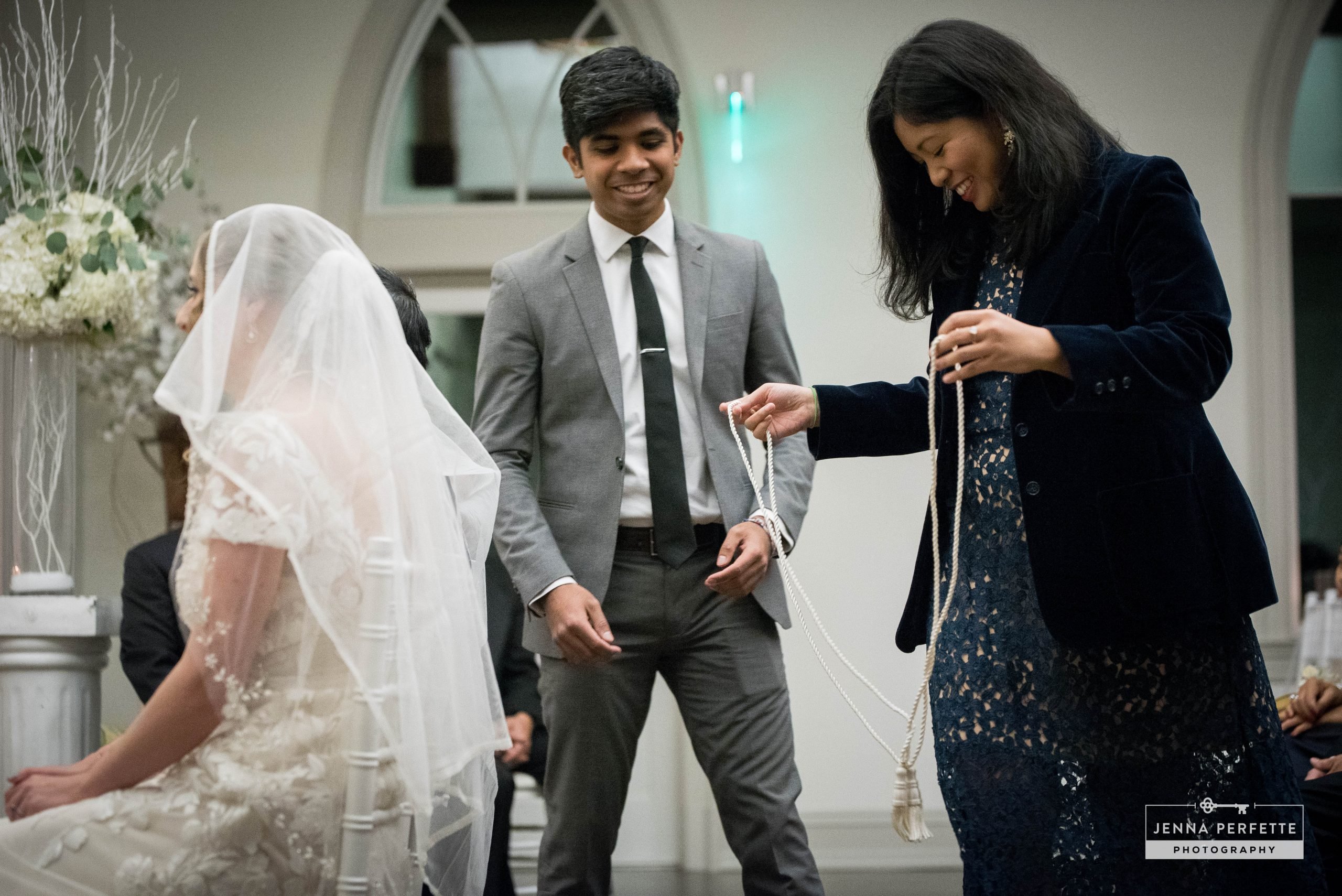
Beyond the bridesmaids and groomsmen, Filipino Catholic weddings also include guests with the title of Sponsor. The veil ceremony is meant to bond the couple and recognize them as one. An infinity shaped cord represents the couple’s bond and union, placed on top of the veil while the couple receives their blessing. The coin ceremony represents the couple’s sharing of worldly goods, for richer or poorer
The Cord of Three Strands Ceremony
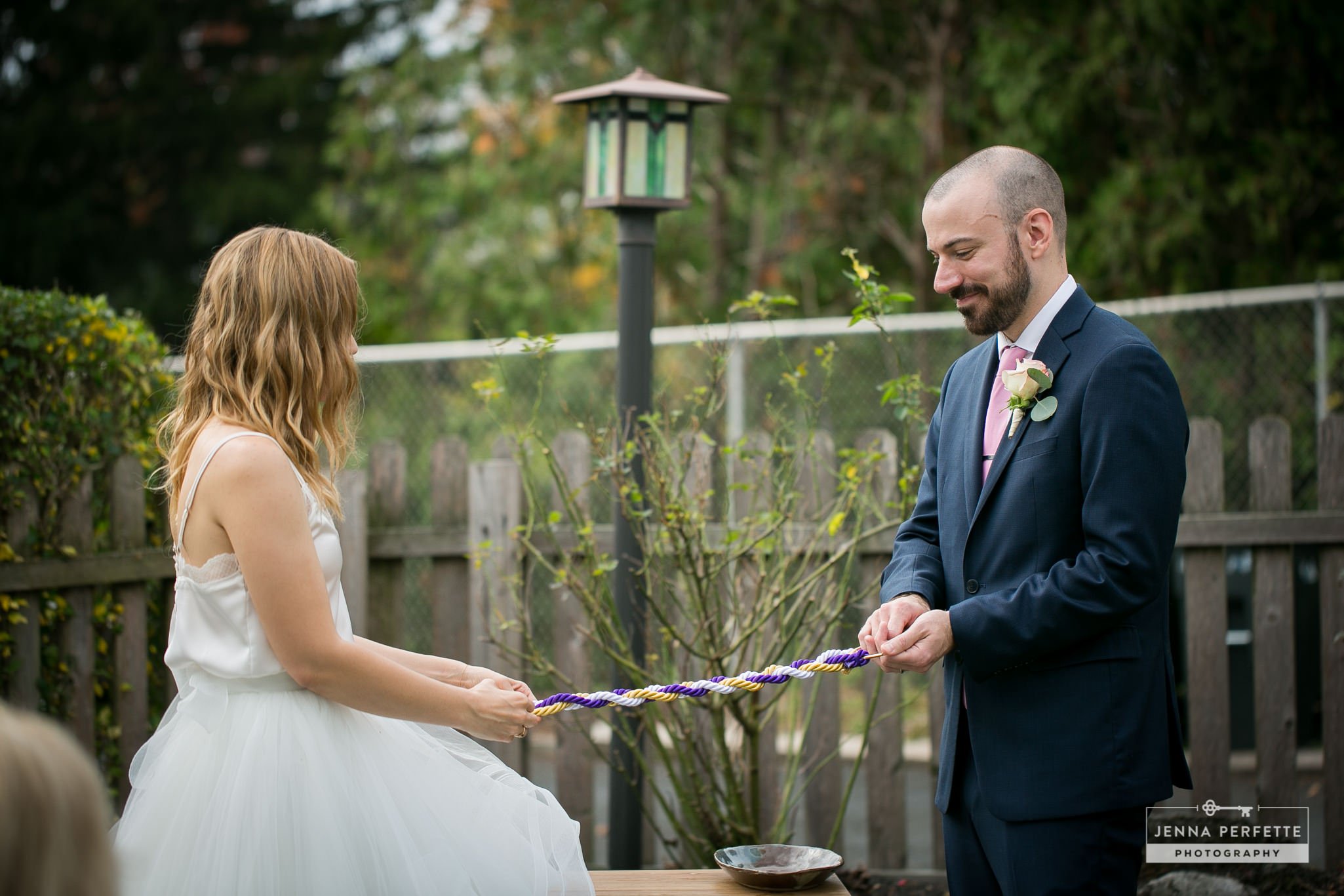
The Cord of Three Strands Ceremony, also known as God’s Knot, is a religious wedding ceremony tradition. The strands symbolize the husband, wife, and god. The groom holds the end of the strands while the bride braids the strands together. The purple strand represents the groom, the white strand represents the bride, and the gold strand represents god.
The braiding is done while an explanation of the significance of the braiding ritual is being read, while wedding music is being played, or while a wedding song is being chanted. It’s often used in place of the unity candle, if the ceremony is outside or candles otherwise can’t be used or it would be impractical.
Circling Ceremony
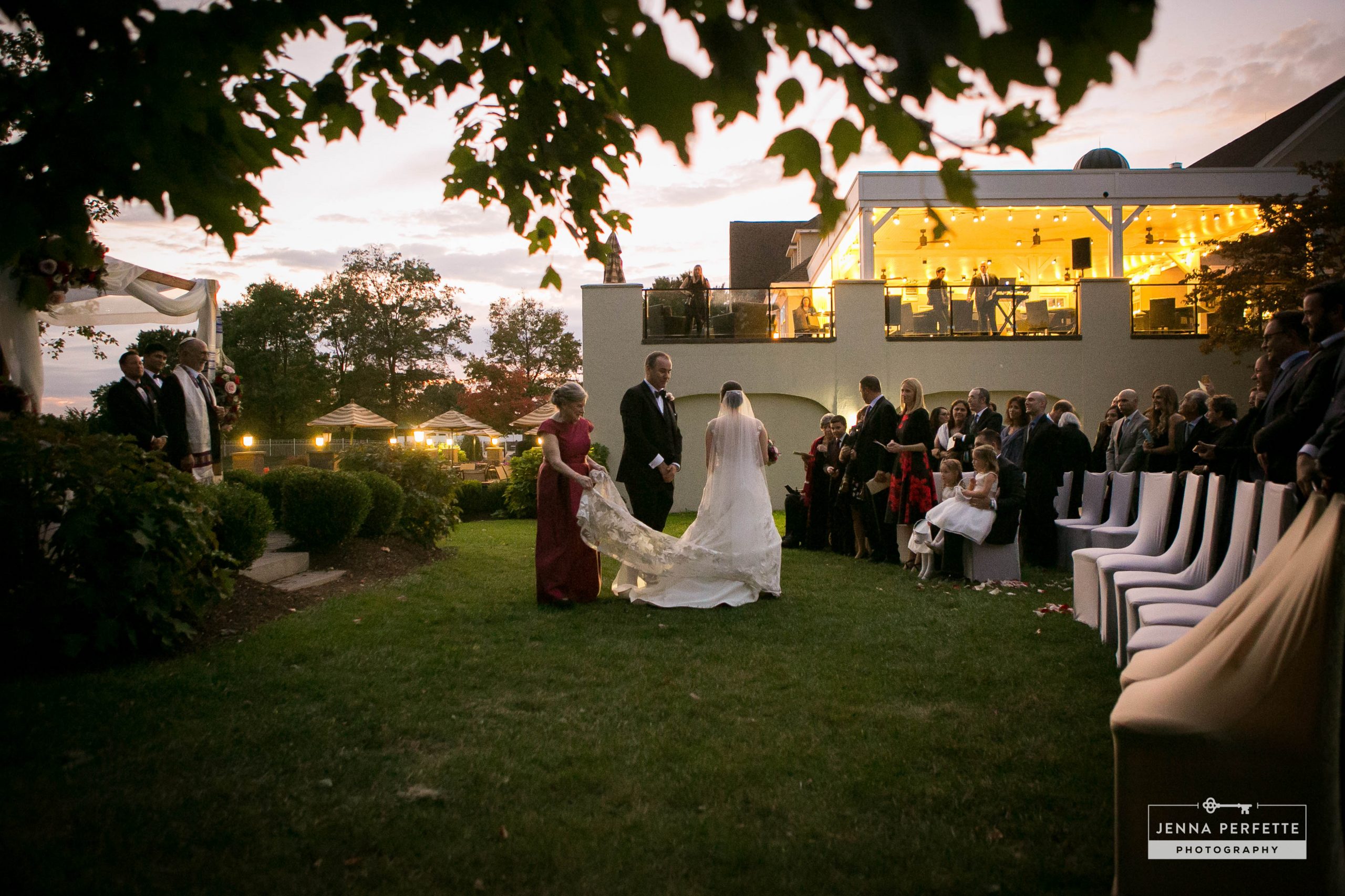
A Jewish custom of the bride circling the groom seven (sometimes three) times is one I’ve only see a few times at weddings. A few explanations exist about its significance, but one of the most interesting reasons is the teaching that in circling seven times, the bride “enters seven spheres of her husband’s innermost being.”
The receiving line
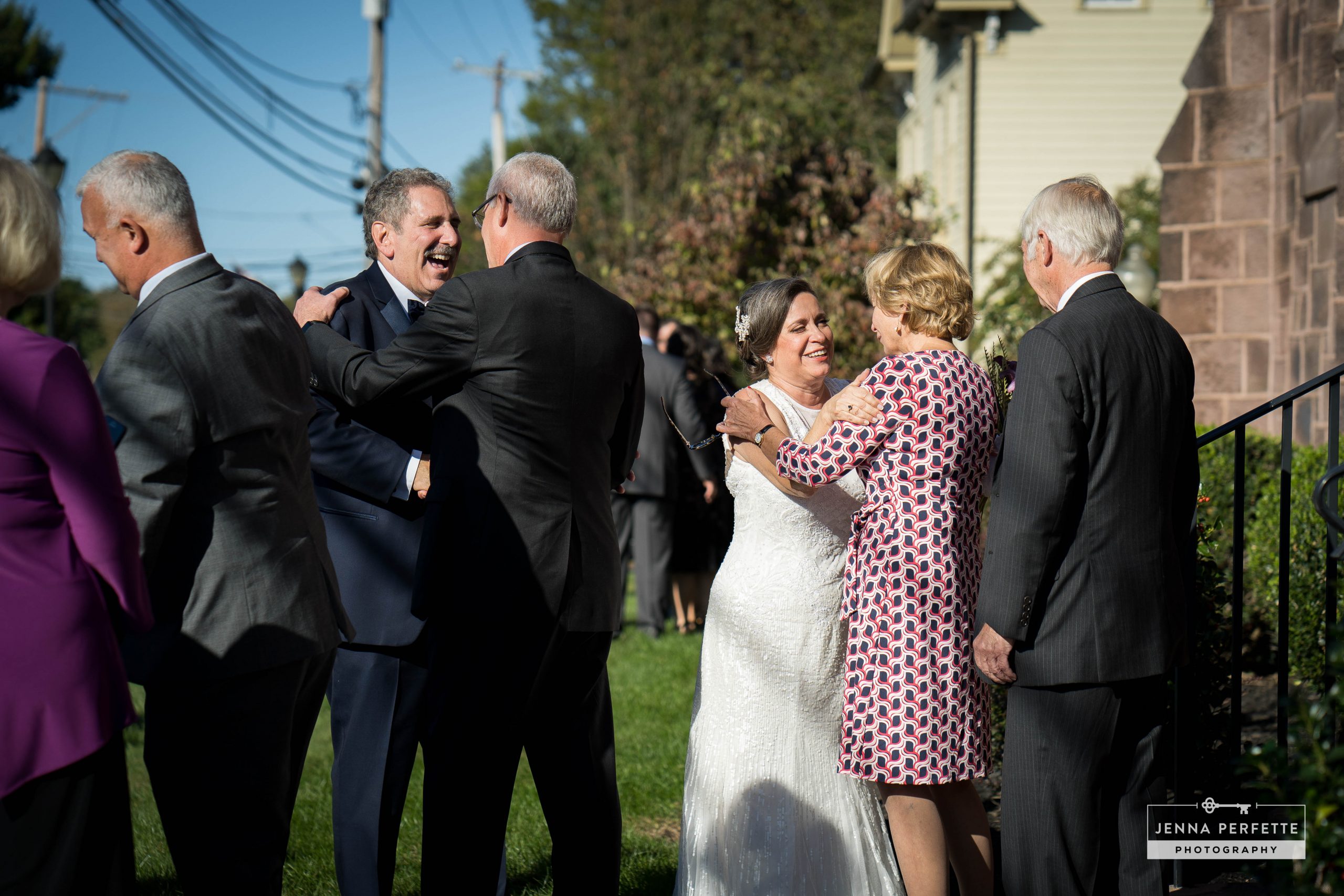
A receiving line is a great option to ensure you have a chance to greet all of your guests. This is especially important if you have a larger guest list. After the ceremony, the bride and groom (and sometime their parents and the bridal party) line up at the back end of their church or ceremony space where the guests can offer well wishes to the newlyweds.
Unity candle
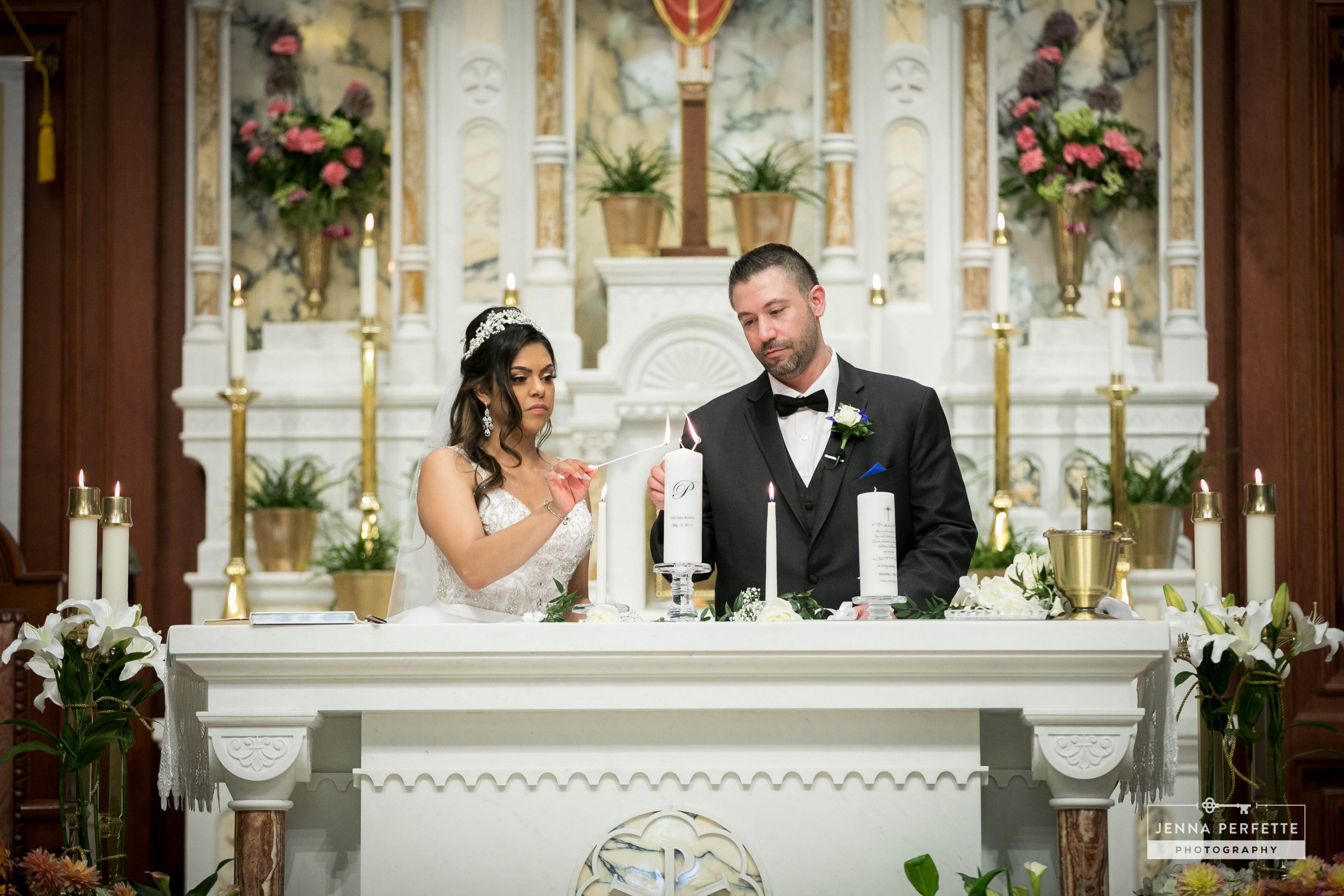
The unity candle represents the merging of two families. Traditionally, the mothers will light two candles representing the individual families, then the couple will take those lit candles and light the unity candle together, merging the flames. This ceremony can be flexible to include fathers or other members of the separate families. It is usually done immediately following vows. This custom has risen in popularity over the last few decades, in both religious and secular weddings. For Christian weddings, the flame is typically meant to symbolize the Holy Spirit, but this tradition isn’t actually from religious origins, so anyone can incorporate this into their wedding day.
Throwing rice or blowing bubbles
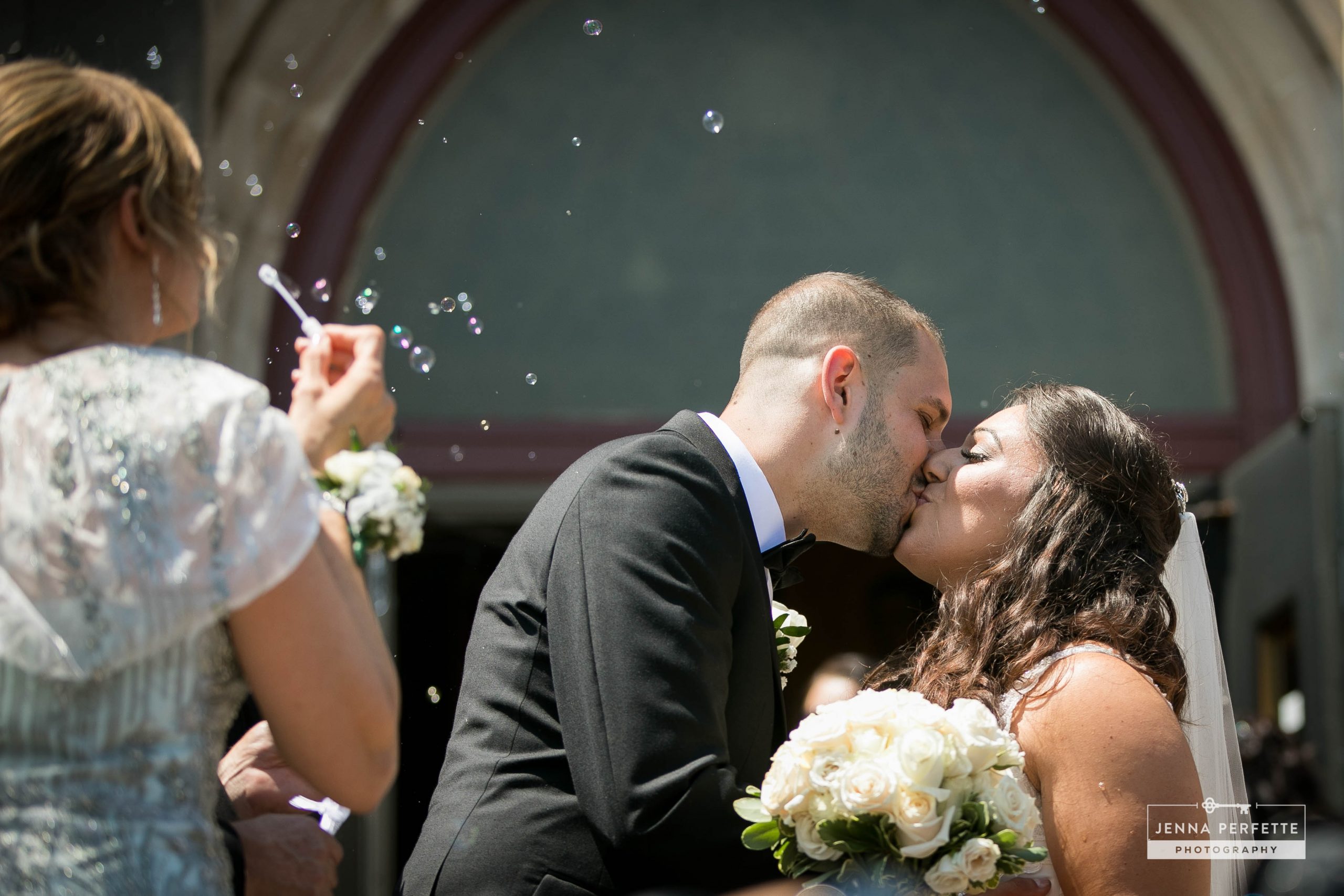
This tradition dates back to at least the Roman era. It was believed that throwing rice is symbolically showering the newlyweds with fortune, fertility, and prosperity. The item that was thrown varied by country, but it was typically a seed or grain local to that country. An alternative to throwing rice in recent years has bee to blow bubbles as the couple walks through. Many churches in particular are in favor of this one since there is not clean up involved. Biodegradable confetti has been a popular option recently and can be customized with the wedding’s theme.
Ketubah signing
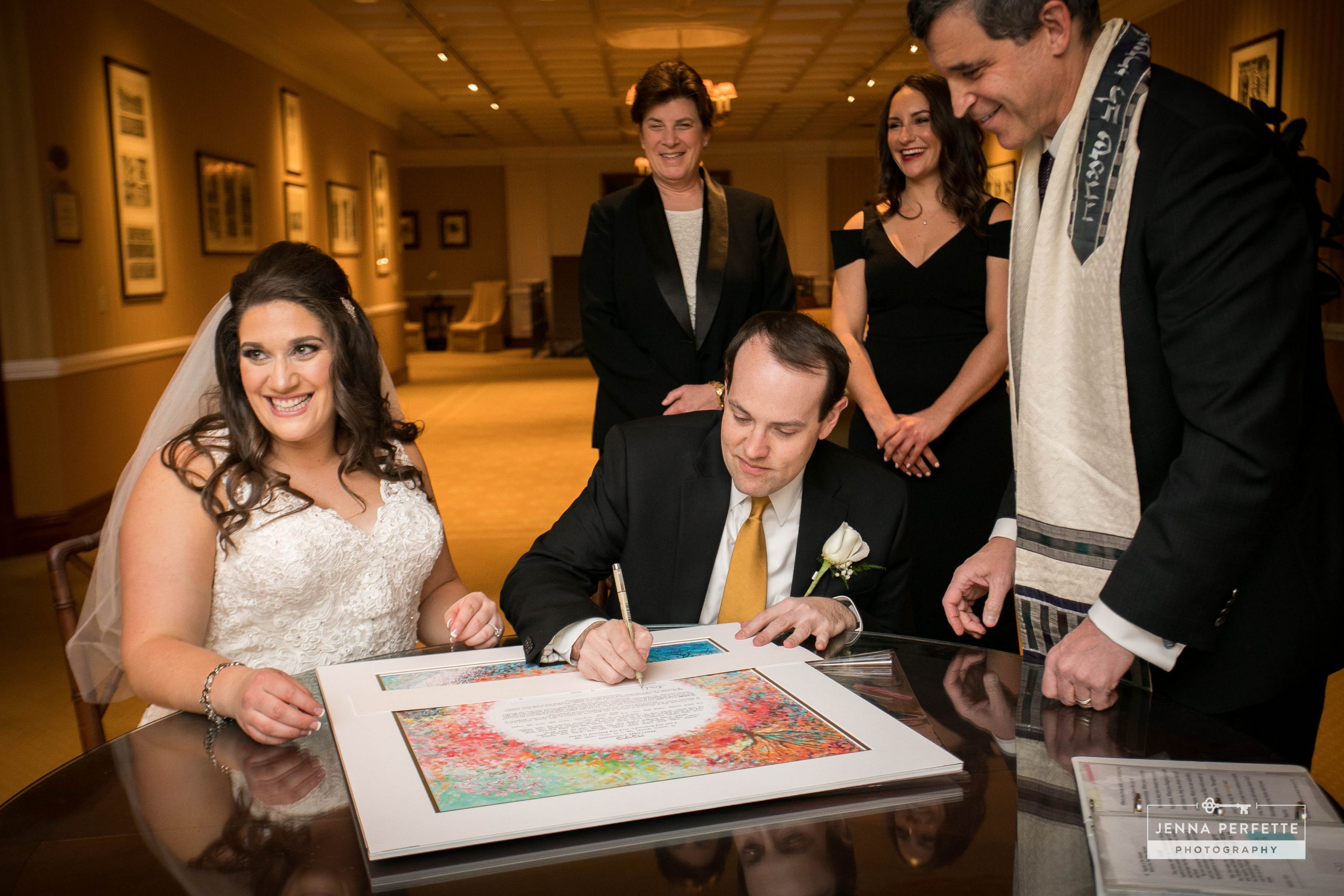
The ketubah is a Jewish marriage contract that is validated before a wedding ceremony. The couple, a rabbi or cantor, and witnesses all participate in the signing of the ketubah. Once signed, it is later read out loud at the ceremony. It is later typically displayed in the bride and groom’s new home. The ketubah not only lists all the details of the wedding, but it also outlines what the couple owes each other during their marriage. In traditional communities, it lays out what the groom is obligated to provide his bride and lists both financial and conjugal responsibilities. It also outlines what happens in the case of a divorce or untimely death. In modern communities, the bride and groom determine what they will give each other, similar to vows.
Jumping the broom
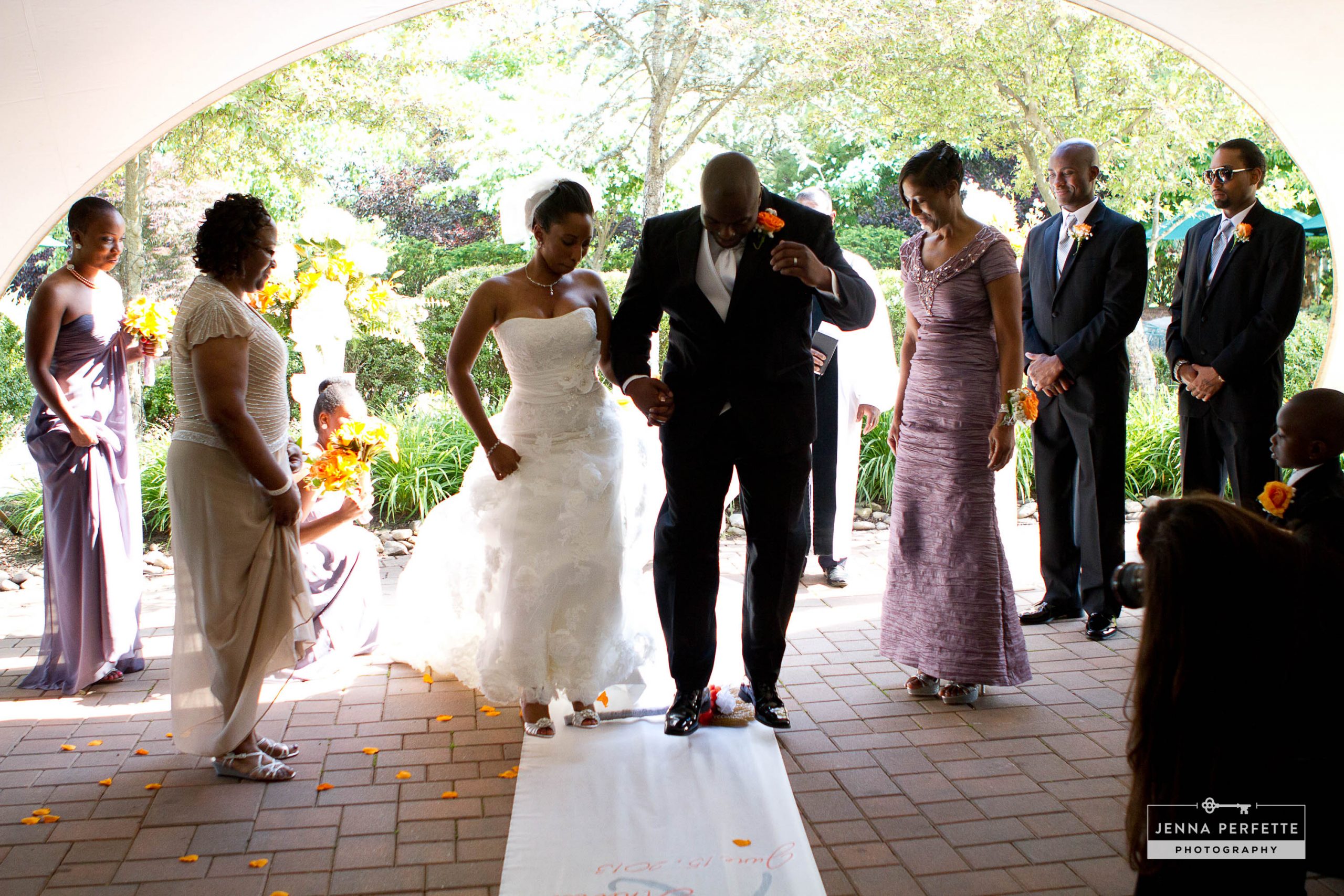
Jumping the broom is a tradition performed at some Black weddings after vows are exchanged. It symbolizes sealing the union and has various different meanings in different cultures. Most commonly, in Christian ceremonies, the handle represents God, the straw represents the two families, and a ribbon tied around the broom represents the ties that bind the couple. The broom is usually kept as a keepsake after the wedding and can be passed down to future generations.
Reception
The horah

The horah is a celebratory dance traditionally performed at Jewish weddings and other celebrations. Guests lift the newlyweds up by their chairs while holding onto a handkerchief or cloth napkin and guests dance around them in circles. In traditional settings, men and women dance separately. In modern ceremonies, they will dance together with the couple in the center. The couple’s immediate family members are also sometimes lifted into the middle of the circle. This high energy dance can be a couple minutes or can last hours (yes, really), so it’s not for the faint of heart.
Bouquet toss

The bouquet toss is one wedding tradition most people are probably aware of. It has actually existed for hundreds of years, but has evolved over time. Towards the end of the reception, the bride throws her bouquet behind her to a group of unmarried women. Whoever catches it is supposedly going to be the next one to get married.
In the 1700s, it was good luck to even just touch the bride on her wedding day. Some women even went so far as to try taking keepsakes of the wedding dress as she passed by, just for that extra bit of good luck. As the story goes, the bride would toss the bouquet to avoid having her dress picked apart. Yikes, what does a girl have to do to keep her beautiful dress?! While the bouquet toss can still get a little rowdy, it luckily isn’t as intense as it once was.
Garter toss

A garter is a piece of lingerie worn under the wedding dress. During the reception, the groom will remove it with his hands or teeth. He’ll then toss it into a crowd of eager bachelors. The garter toss is similar to the bouquet toss in that it the receiver of the garter is said to be the next to get married. If you’re worried about grandma witnessing this act, you can opt to instead hand the garter to the groom.
Cutting the cake
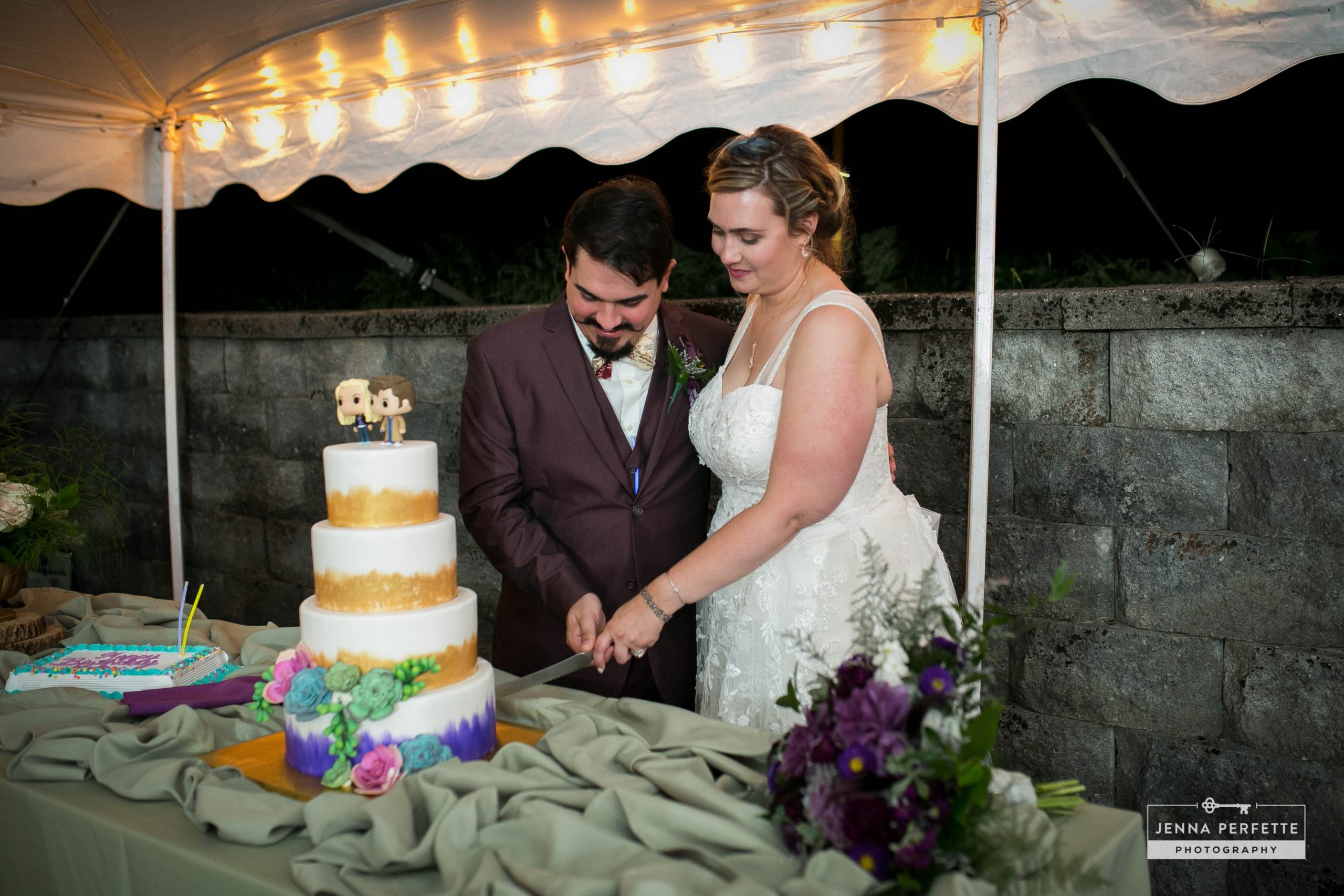
When cutting the wedding cake, the groom places his hand over the bride’s to symbolize his support for her. Couples are encouraged to cut from the bottom tier, symbolizing longevity and continuity. I always just assumed they cut from the bottom to avoid a jenga-like avalanche. After the cutting, the bride and groom will then feed each other a bite of the cake. This is said to symbolize their commitment to take care of one another.
New tradition in the making
First look

The first look is when the bride and groom arrange to privately see each other before the ceremony. Over the past few years this has become more the rule than the exception. Many couples, even early in their wedding planning, often come to me saying, “we already know we want to do a first look!” Having a first look allows us the time before the ceremony to capture tons of beautiful images. Most importantly, it allows photos around the venue of the bride and groom, the bridal party and the immediate family. The first look opens up the opportunity to create a really beautiful and authentic moment – in private. If you are someone who doesn’t love being the center of attention, I promise you’ll be more at ease seeing each other for the first time if it’s just the two of you.
April 22, 2021
hugs,
Jenna
READ THE POST
Lorem ipsum dolor sit amet, consectetur adipiscing elit. Nullam vitae metus.
7 Tips for Working from Home
YOU MIGHT ALSO LIKE
READ THE POST
Lorem ipsum dolor sit amet, consectetur adipiscing elit. Nullam vitae metus.
7 Tips for Working from Home
READ THE POST
Lorem ipsum dolor sit amet, consectetur adipiscing elit. Nullam vitae metus.
7 Tips for Working from Home
READ THE POST
Lorem ipsum dolor sit amet, consectetur adipiscing elit. Nullam vitae metus.
